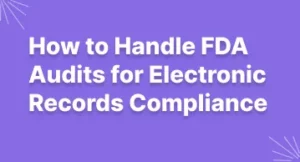Sign with Confidence: A Global Guide to E-Signature Laws
In today’s digital age, the world has witnessed a profound transformation in the way businesses operate. Transactions occur at lightning speed, and geographical borders no longer serve as barriers. The core catalyst behind this change is the adoption of electronic signatures, or e-signatures. These digital counterparts to traditional handwritten signatures have quickly become integral to modern commerce. The global nature of business in the 21st century necessitates secure, legally recognized, and standardized e-signature regulations worldwide. This comprehensive guide will lead you on a journey through the world of e-signature regulations, diving deep into their significance, the intricate legal frameworks they operate under, and the critical aspect of compliance. Furthermore, we’ll introduce you to MSB Docs eSignature Solution, a globally compliant platform designed to simplify the e-signature process for businesses operating across diverse jurisdictions.
I. Introduction
In an era where digital transformation is redefining the way businesses function, the relevance of electronic signatures cannot be overstated. E-signatures are more than a convenience; they are a necessity in a globalized world. This blog will take you on a comprehensive exploration of e-signature regulations around the world, aiming to provide a nuanced understanding of their importance, the legal frameworks governing them, and the intricacies of compliance. We’ll also introduce you to MSB Docs eSignature Solution, a globally compliant platform that simplifies e-signature processes for businesses operating internationally.
II. What Are E-Signatures?
E-signatures, short for electronic signatures, are digital representations of a person’s consent or agreement to a document or transaction. They encompass various methods, from simple checkbox clicks to advanced cryptographic techniques, all geared towards ensuring the authenticity and integrity of digital interactions.
E-signatures have surged in popularity due to their efficiency, convenience, and security. They enable organizations to expedite document signing, reduce costs linked to paper-based transactions, and enhance the security of sensitive data.
III. The Advantages of E-Signatures
The adoption of e-signatures delivers numerous advantages that significantly impact various industries and business processes. These advantages, often instrumental for a company’s success in the digital era, include:
- Improved Efficiency: E-signatures expedite processes by reducing the time and effort required for document signing and management.
- Cost Savings: Transitioning to e-signatures can lead to substantial cost savings by reducing paper and printing expenses and eliminating the need for physical storage.
- Enhanced Security: Many e-signature solutions are equipped with advanced security features like encryption and audit trails, making them more secure than traditional signatures.
- Globalization: As international business becomes the norm, e-signatures streamline cross-border transactions, removing the need for physical document transportation.
- Environmental Responsibility: The shift towards e-signatures aligns with sustainability goals by reducing paper consumption and its environmental impact.
IV. The Legal Framework for E-Signatures
The validity of e-signatures is a fundamental element of their adoption. To ensure trust in digital transactions, different countries have developed legal frameworks that establish the legality of electronic signatures. Understanding these regulations is critical for organizations that operate internationally.
Key Features of Effective E-Signature Laws
Effective e-signature laws have several key features that are critical to ensuring the validity, security, and reliability of electronic signatures. These features help build trust in digital transactions and provide a clear legal framework for their use.
- Non-Repudiation: Non-repudiation is a fundamental aspect of e-signature laws. It means that once a document is signed electronically, the signatory cannot later deny their involvement or the authenticity of their signature. Non-repudiation is achieved through various means, including the use of cryptographic techniques and audit trails that record the signing process, making it nearly impossible for a signatory to disavow their signature.
- Authentication:Authentication requirements are crucial for ensuring that the identity of the signatory is verified. Effective e-signature laws typically require methods to confirm the identity of the person signing the document. This can involve the use of secure login credentials, biometric verification, or digital certificates issued by trusted authorities. Strong authentication methods enhance the security and trustworthiness of electronic signatures.
- Data Integrity: Data integrity is another vital feature of e-signature laws. It ensures that the content of the signed document remains unchanged from the moment it is signed. To achieve data integrity, electronic signatures often use cryptographic techniques to create a unique digital fingerprint of the document. Any subsequent alterations to the document, even minor changes, would result in a different fingerprint, alerting all parties to the tampering.
Incorporating these key features into e-signature laws helps establish a robust legal framework for electronic signatures. These features collectively contribute to the security, trust, and reliability of e-signatures, making them a valuable tool for modern businesses and organizations engaged in digital transactions.
VI. E-Signature Regulations in North America
United States
The United States took a significant step towards e-signature legitimacy with the Electronic Signatures in Global and National Commerce (ESIGN) Act of 2000. This federal law played a pivotal role in establishing the legality of e-signatures in a broad spectrum of transactions. Additionally, individual states in the U.S. adopted the Uniform Electronic Transactions Act (UETA) to provide a uniform framework for electronic transactions.
Canada
In Canada, e-signatures have been legally recognized under the Personal Information Protection and Electronic Documents Act (PIPEDA). This act outlines privacy rules for businesses, ensuring the legal validity of e-signatures in the country.
VII. E-Signature Regulations in Europe
The European Union (EU) has made significant strides in standardizing e-signature regulations with the introduction of the eIDAS Regulation (Electronic IDentification, Authentication, and trust Services). eIDAS establishes a common standard for e-signatures, ensuring their legal validity across the EU.
However, individual European countries also maintain their e-signature laws. For instance, Germany has the Signaturgesetz, and France has the Electronic Signature Act, both of which align with the eIDAS Regulation, ensuring the legal recognition of e-signatures within these nations. Similarly, the United Kingdom follows the Electronic Identification and Trust Services for Electronic Transactions Regulations 2016 to govern e-signatures.
VIII. E-Signature Regulations in Asia
India
In India, e-signatures have been legally recognized and regulated by the Information Technology Act of 2000. The act was further strengthened by the 2015 amendments, solidifying the legal framework for electronic signatures.
China
China’s Electronic Signature Law, established in 2005, governs the use of e-signatures in various transactions. The law imposes specific requirements to ensure the legal validity and reliability of e-signatures.
Japan
Japan recognizes e-signatures as legally binding under the Electronic Signature and Certification Business Act. This act ensures that e-signatures are equivalent to traditional handwritten signatures concerning their legal standing.
IX. E-Signature Regulations in Africa
E-signature regulations across Africa exhibit a diversity that reflects the varying levels of technological adoption and development in the region. While some countries, such as South Africa, have established legal frameworks for e-signatures, many others are in the process of developing or amending existing laws to accommodate digital signatures. This diversity poses challenges for businesses aiming to achieve e-signature compliance across the continent.
X. E-Signature Compliance and Security
Compliance with e-signature regulations is paramount to avoid legal complications. Compliance necessitates businesses understanding the specific requirements outlined in the regulations of the regions in which they operate. In addition to compliance, ensuring the security of e-signature transactions is crucial to protect sensitive data and maintain trust.
Modern e-signature solutions come equipped with advanced security features, including encryption, access controls, and detailed audit trails, which are essential for preserving the integrity of signed documents. Compliance and security are interdependent, underscoring the importance of selecting e-signature solutions that meet both criteria.
XI. Best Practices for Implementing E-Signatures
Effectively implementing e-signatures requires a combination of understanding the legal landscape, selecting the right technology, and adhering to best practices. Businesses should consider the following factors:
- User Experience: A seamless and user-friendly e-signing experience is crucial for encouraging adoption and increasing efficiency. An intuitive interface can expedite the signing process, ensuring that signers and administrators find it user-friendly.
- Integration: E-signature solutions should integrate seamlessly with other business systems and applications to maintain workflow efficiency. Integration allows for a smooth transition from paper-based to digital processes.
- Scalability: A robust e-signature solution should be capable of scaling with the growth of your business. Scalability ensures that the e-signature solution remains effective as your business expands, accommodating changing demands.
XII. MSB Docs eSignature Solution Globally Compliant
Navigating the complex world of e-signature regulations can be challenging for businesses, especially those operating across diverse jurisdictions. This is where MSB Docs eSignature Solution steps in. It’s a globally compliant platform designed to offer a comprehensive e-signature solution that adheres to the legal requirements of various countries and regions.
- a. Global Compatibility: MSB Docs has been meticulously designed to comply with e-signature laws in numerous countries and regions. This compatibility empowers businesses to operate globally with ease and confidence.
- b. Advanced Security: The platform employs cutting-edge encryption and security measures to protect the integrity of e-signature transactions. Security is a cornerstone of the solution, ensuring the utmost trust and reliability.
- c. User-Friendly Interface: MSB Docs is designed with a user-friendly interface that simplifies the e-signing process for both signers and administrators. Its intuitive design makes the adoption of e-signatures a breeze.
- d. Integration: The solution is highly versatile, offering seamless integration with other business systems and applications, thereby ensuring a smooth workflow transition.
- e. Audit Trail: Detailed audit trails generated by MSB Docs provide transparency and accountability in e-signature transactions. This feature is essential for organizations that require a comprehensive record of the signing process.
- f. Customization: MSB Docs is flexible and allows businesses to customize the platform to match their specific branding and workflow requirements. Customization ensures that the solution aligns perfectly with your business processes.
By selecting MSB Docs eSignature Solution, businesses can confidently embrace e-signatures while adhering to the legal regulations in different parts of the world. This streamlined solution is not only secure but also highly adaptable to specific business needs.
XIII. Future Trends in E-Signature Regulations
The landscape of e-signature regulations is dynamic and is expected to evolve further as technology advances. Some future trends to observe include:
- Increased Cross-Border Recognition: With global business transactions becoming more common, there’s likely to be a push for increased recognition of e-signatures across borders. This would simplify international trade by minimizing the legal complexities of cross-border transactions.
- Blockchain Technology: Blockchain technology is gaining traction in the e-signature sector due to its inherent security and trustworthiness. The immutability and transparency of blockchain could significantly impact the future of e-signatures.
XIV. Conclusion
E-signatures represent a transformative force in the digital world, facilitating businesses to operate efficiently, securely, and cost-effectively. In a constantly evolving international business landscape, understanding and complying with e-signature laws have become complex but vital tasks. However, with solutions like MSB Docs eSignature Solution, businesses can navigate these challenges with confidence, enabling them to leverage the full potential of e-signatures.
In conclusion, staying informed about e-signature regulations worldwide and adopting compliant e-signature solutions are essential steps for businesses aiming to thrive in the digital era. Armed with the right knowledge and tools, organizations can streamline operations, reduce costs, and enhance security while fully embracing the potential of e-signatures. Ready to streamline your document signing processes while ensuring global compliance? Explore the power of MSB Docs eSignature Solution by requesting a demo or starting a free trial today!
FAQs
1. Are e-signatures legally binding internationally?
E-signatures are recognized and legally binding in numerous countries globally. However, the specifics of e-signature laws can vary by country. It’s important to ensure compliance with the legal requirements of the specific jurisdiction in which you’re conducting business.
2. Do e-signatures have the same legal weight as handwritten signatures?
In many jurisdictions, e-signatures have the same legal weight as handwritten signatures. Laws like the eIDAS Regulation in the European Union and the ESIGN Act in the United States explicitly recognize the legal validity of e-signatures, making them equivalent to traditional signatures.
3. What are the key security measures for e-signatures to ensure data integrity?
Data integrity in e-signatures is maintained through cryptographic methods that create a unique digital fingerprint of the signed document. Additionally, audit trails, secure authentication, and encryption are vital security measures that ensure the integrity of e-signed documents.
4. Can I use a personal e-signature for business transactions?
While personal e-signatures can be used for some business transactions, it’s advisable to employ a more secure and professionally managed e-signature solution for important business documents. These solutions often offer advanced security features and better legal recognition.
5. What are the potential risks of not complying with e-signature laws?
Failing to comply with e-signature laws can result in legal disputes, unenforceable agreements, and reputational damage. Non-compliance may also lead to regulatory fines and penalties, making it crucial for businesses to understand and adhere to the relevant regulations in their jurisdiction.





